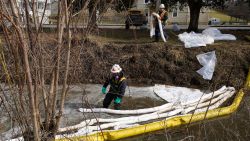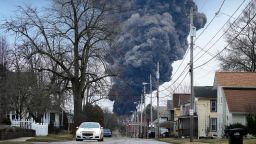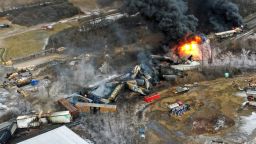Weeks after a major train derailment and controlled explosion of chemicals in East Palestine, Ohio, residents have been encouraged to return home. But many questions remain about how the train derailed and what the lingering chemical exposure could be in residents’ air and water.
Toxic train derailments don’t happen very often, but they can have serious consequences for human and environmental health when they do. Here are some common questions, answered.

Why are hazardous materials transported by train?
America’s railroads move a lot of chemicals. Freight trains moved 2.2 million carloads of chemicals in 2021, according to the Association of American Railroads.
This is in large part because railroads are considered the safest mode of transportation to carry large amounts of hazardous materials, including chemicals, for long distances across the country, according to the Federal Railroad Administration.
The agency’s website says railroad accidents that resulted in hazardous materials being released caused just 14 deaths from 1994 to 2005, while 116 deaths resulted from hazardous materials spilling after highway accidents in the same time period.
Still, because trains are crossing state lines, Ohio Gov. Mike DeWine said he was concerned about the lack of information individual states have about what the rail cars are carrying.
During a Tuesday news conference, DeWine said the Norfolk Southern train that derailed was not categorized as a high hazardous material train, meaning the railroad was not required to notify state officials about what chemicals the rail cars contained.
“If this is true – and I’m told it’s true – this is absurd,” DeWine said. “We should know when we have trains carrying hazardous material that are going through the state of Ohio.”
DeWine urged Congress to consider updating hazard codes for trains so that states have more information.
How often does this kind of incident happen?
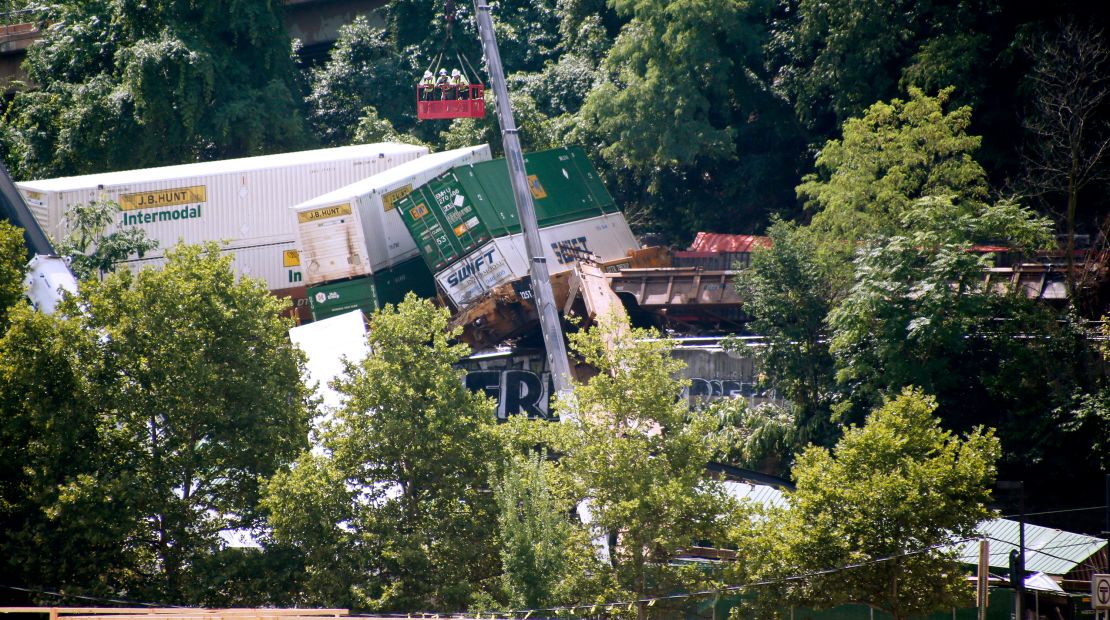
Rail has long been the default method of hauling bulk hazardous material.
“It’s the mode of transportation that’s capable of moving bulk quantities,” Federal Rail Administration spokesperson Warren Flatau told CNN. “These commodities cannot be moved by pipeline; the alternative is moving them by truck over the highways, which is not looked upon favorably.”
Even though federal and industry statistics show that rail is a safer way to carry hazardous materials than truck or plane, spills and leaks still happen.
USA Today analyzed 10 years of federal rail incident reports and found over 5,000 incidents of hazardous materials spilling or leaking from trains that were either in transit or sitting in rail yards. In 2022, rail companies reported over 330 spills or leaks of hazardous materials – of which only six caused an injury.
However, the USA Today analysis found that other forms of transportation are much more leak-prone: “for every rail leak reported last year, there were two involving planes and 67 on highways.”
Federal Rail Administration data provided to CNN showed 149 incidents where hazardous materials were released from moving trains over the past decade.
It’s important to note the federal data is being self-reported by train companies, making it tough to verify all the information is accurate.
Larger spills happen when trains derail. In 2018, a Norfolk Southern train derailed in Pittsburgh, spilling a load of mouthwash and releasing “a strong odor,” according to a city news release. Concern also heightened after the Trump administration allowed rail to transport highly explosive liquid natural gas – a rule the Biden administration halted last year.
“The real issue is the risk of derailment and explosion,” Kimberly Garrett, a researcher and PFAS expert at Northeastern University, told CNN. “If natural gas were to have a derailment like the vinyl chloride, it would be devastating.”
How do officials measure the damage and impact?
Ohio Environmental Protection Agency officials have been conducting air, soil and water tests since the controlled explosion of the chemicals inside the rail cars.
As of Tuesday, the EPA reported it had screened indoor air at 396 homes in the area, with 100 homes remaining. The agency has also screened the air of local schools and a library. It has also tested local waterways several times after a plume of contamination was released into them.
The EPA said Tuesday that there were chemicals spilled into the local waterways that lead to the Ohio River, but that much of it was contained. An initial plume of chemicals that was spilled into the waterway had made it to the Ohio River, but officials said they exist in very low concentration, and they are working with water facilities on enhanced filtration so they are not passed onto water customers.
That said, EPA and Ohio state officials urged residents in East Palestine to continue to drink bottled water for now.
While most of the Tuesday news conference focused on volatile organic compounds – chemicals found in common household products – there are other kinds of chemicals that were released in the spill that don’t diffuse as easily, according to Purdue University professor Andrew Whelton, an expert on disasters, environmental chemistry and water quality.
Whelton told CNN the EPA should also continue to monitor semi-volatile organic compounds, which are more persistent and detected in local waterways after the derailment.
“Because of their size, they don’t go in the air as easily,” Whelton said. “They like to stick to soils and other materials. The question is, how contaminated is the creek and what will they do to remediate that?”
If animals are dying, what does that mean for humans?
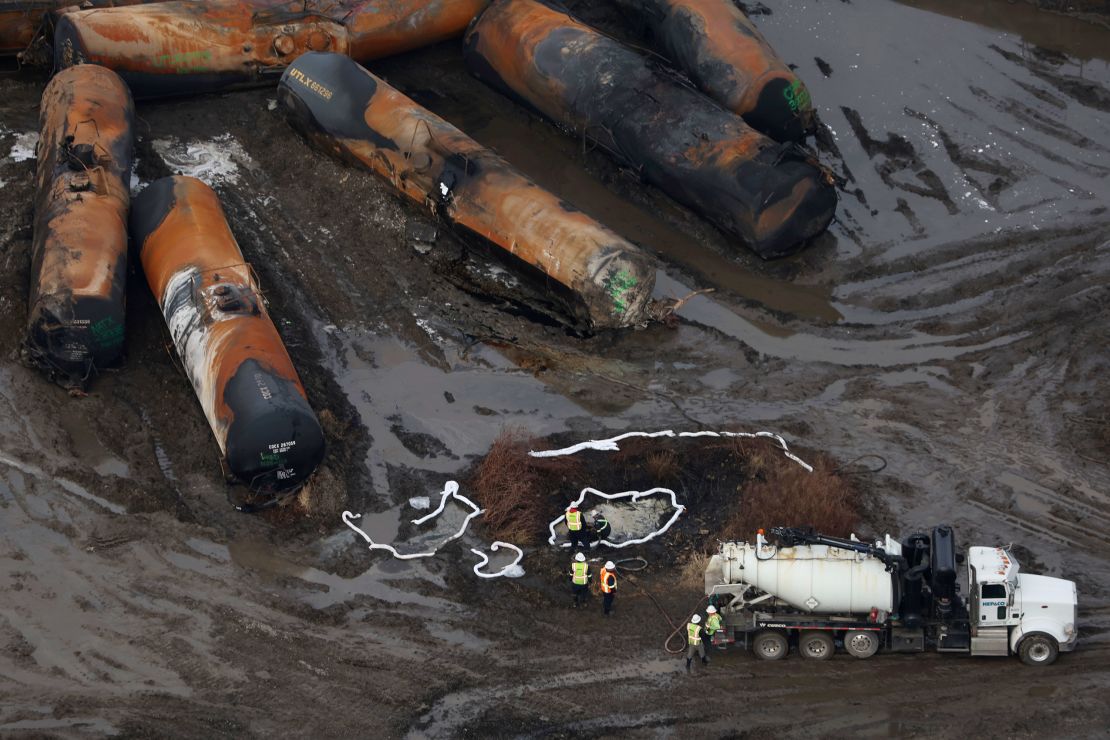
The chemical spill took a severe toll on local aquatic life: About 3,500 fish ranging across 12 species died from the water contamination washing down streams and rivers.
Anecdotal reports of pets and chickens dying have not yet been confirmed by officials. Mary Mertz, the director of Ohio’s Department of Natural Resources, said Tuesday that there’s no evidence that non-aquatic species have been affected by the spill.
The volatile organic compounds released by the controlled explosion can cause symptoms including headache, sore throat, and nose and eye irritation – which some East Palestine residents have complained of. However, Ohio’s state health director Dr. Bruce Vanderhoff said air quality doesn’t appear to be behind the reported animal deaths near the derailment.
“Anecdotes are challenging because they’re anecdotes,” Vanderhoff said. “Everything that we’ve gathered thus far is really pointing toward very low measurements, if at all.”
Vanderhoff repeatedly told residents in East Palestine to use bottled water until testing on their water source is completed. He said it’s especially important to use bottled water for people who are pregnant, breastfeeding or making infant formula.
What goes into cleaning up?
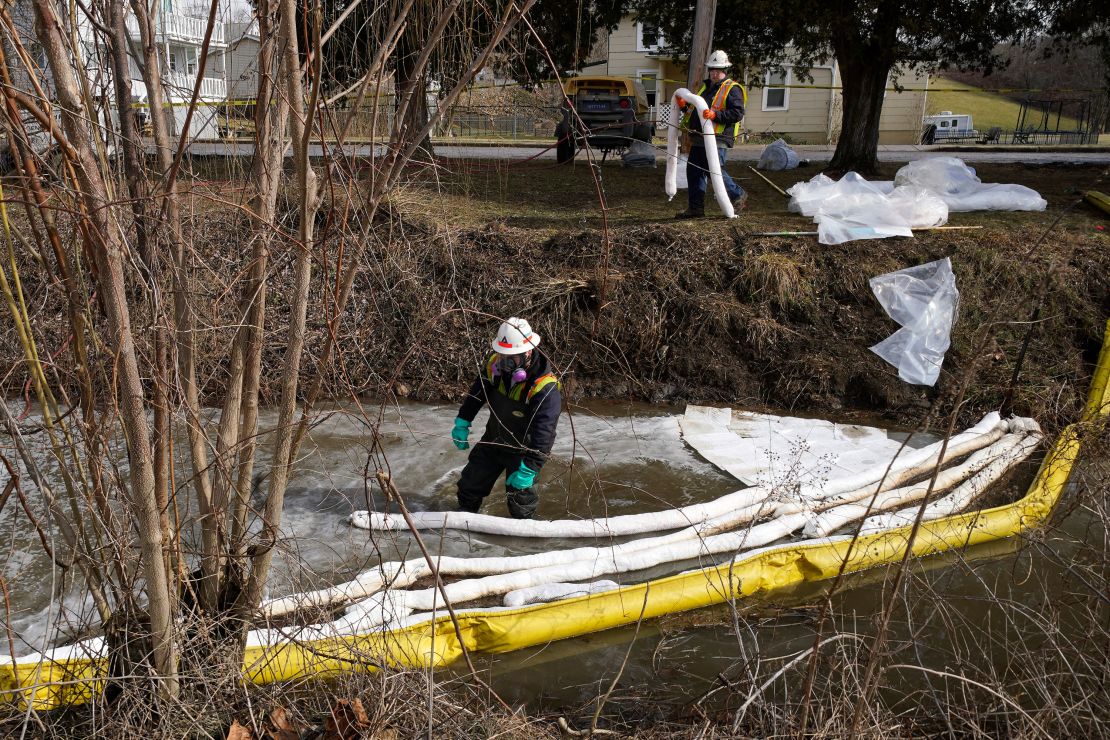
Ohio EPA and state officials have done several different things to try to contain pollution from the chemical spill. Crews have put oil containment booms in waterways and aerated contaminated soil and water.
Crews have excavated and removed nearly 500 cubic yards of “vinyl chloride-impacted material” including soil, according to Kurt Kollar, the on-scene coordinator for the Ohio EPA’s Office of Emergency Response. The EPA is also blocking off ditches around the contaminated dirt so that it doesn’t contaminate more water.
The EPA also said it has collected and stored nearly one million gallons of water in containers. Officials said the plume of initial contamination did flow to the Ohio River, but since that river is very large, “it’s a water body that’s able to dilute the pollutants pretty quickly,” said Tiffani Kavalec, Chief of the Division of Surface Water at the Ohio EPA.
As for drinking water, Kavalec said water treatment facilities should be able to remove the remaining low levels of volatile organic compounds in the water, and that the water will eventually be safe to drink.
What are the possible longterm impacts?
In addition to the chemicals officials say should break down with aeration and water treatment, environmental officials also need to test for PFAS – a long-lasting and potentially more worrying class of chemicals used to put out chemical fires.
PFAS is typically found on non-stick pans and in some firefighting foams. EPA officials said Tuesday they had not yet tested the water for PFAS but would start working on it.
Whereas other chemicals can break down with exposure to sunlight, air and water, “PFAS don’t break down naturally,” Garrett told CNN. The chemicals have also been linked to higher levels of some cancers.
“PFAS migrating downstream would be my biggest concern,” Garrett said.
Correction: An earlier version of this story misspelled the first name of Ohio Environmental Protection Agency official Tiffani Kavalec.


